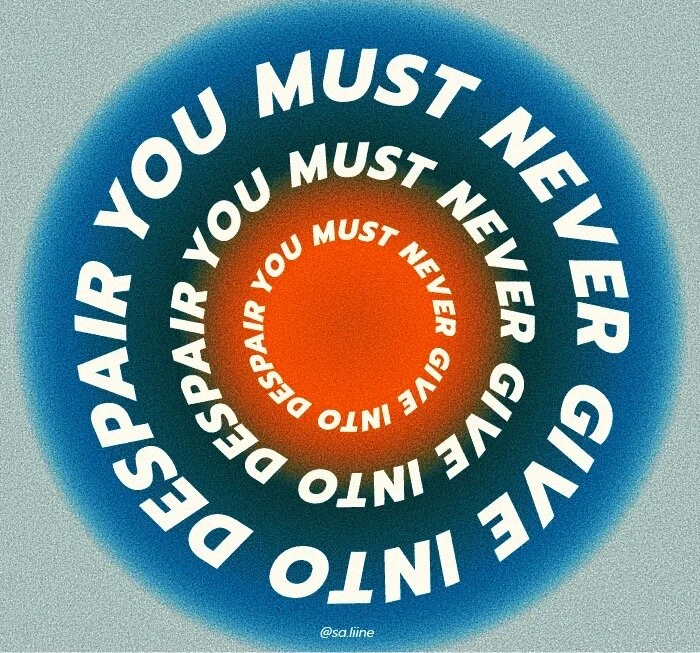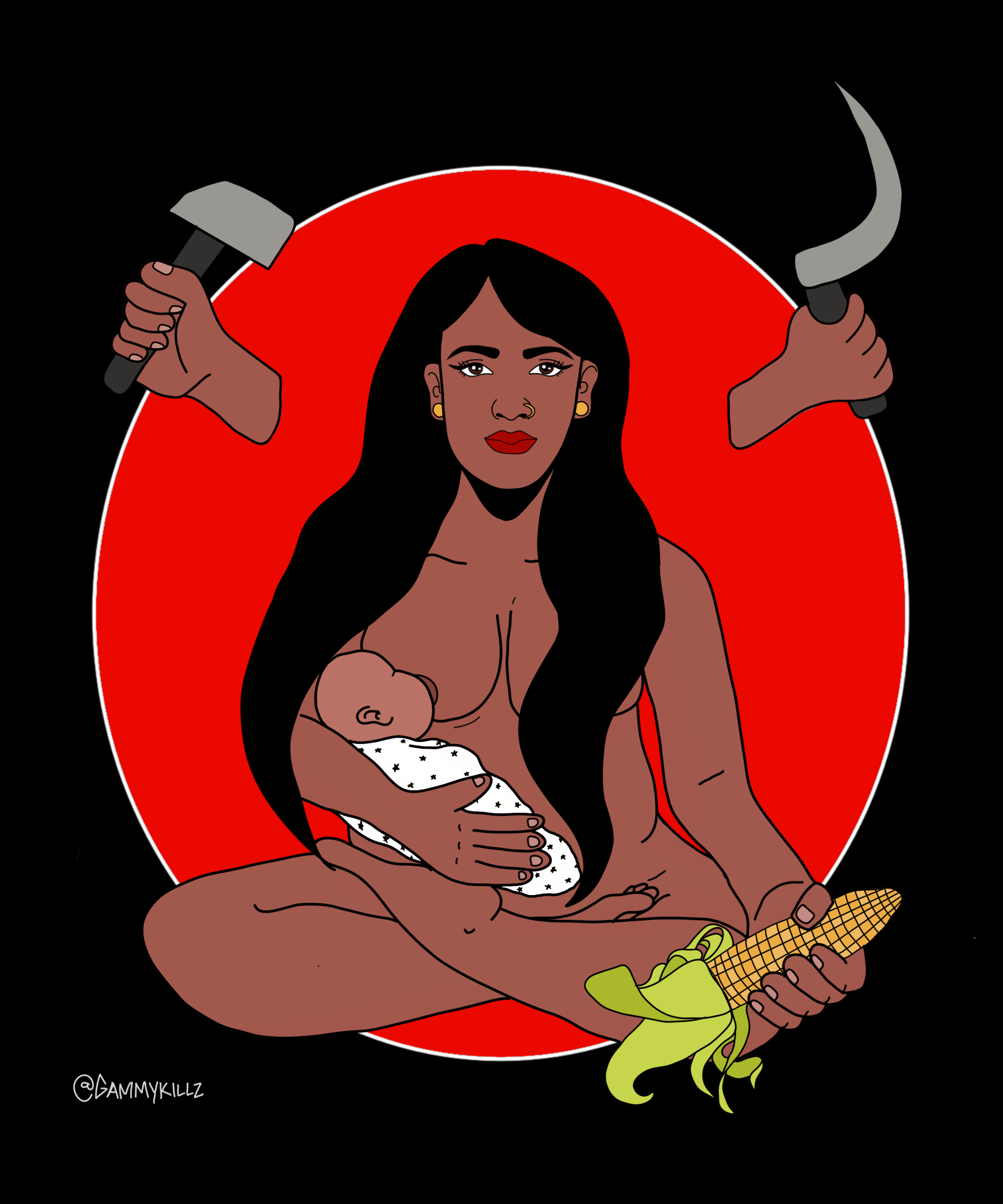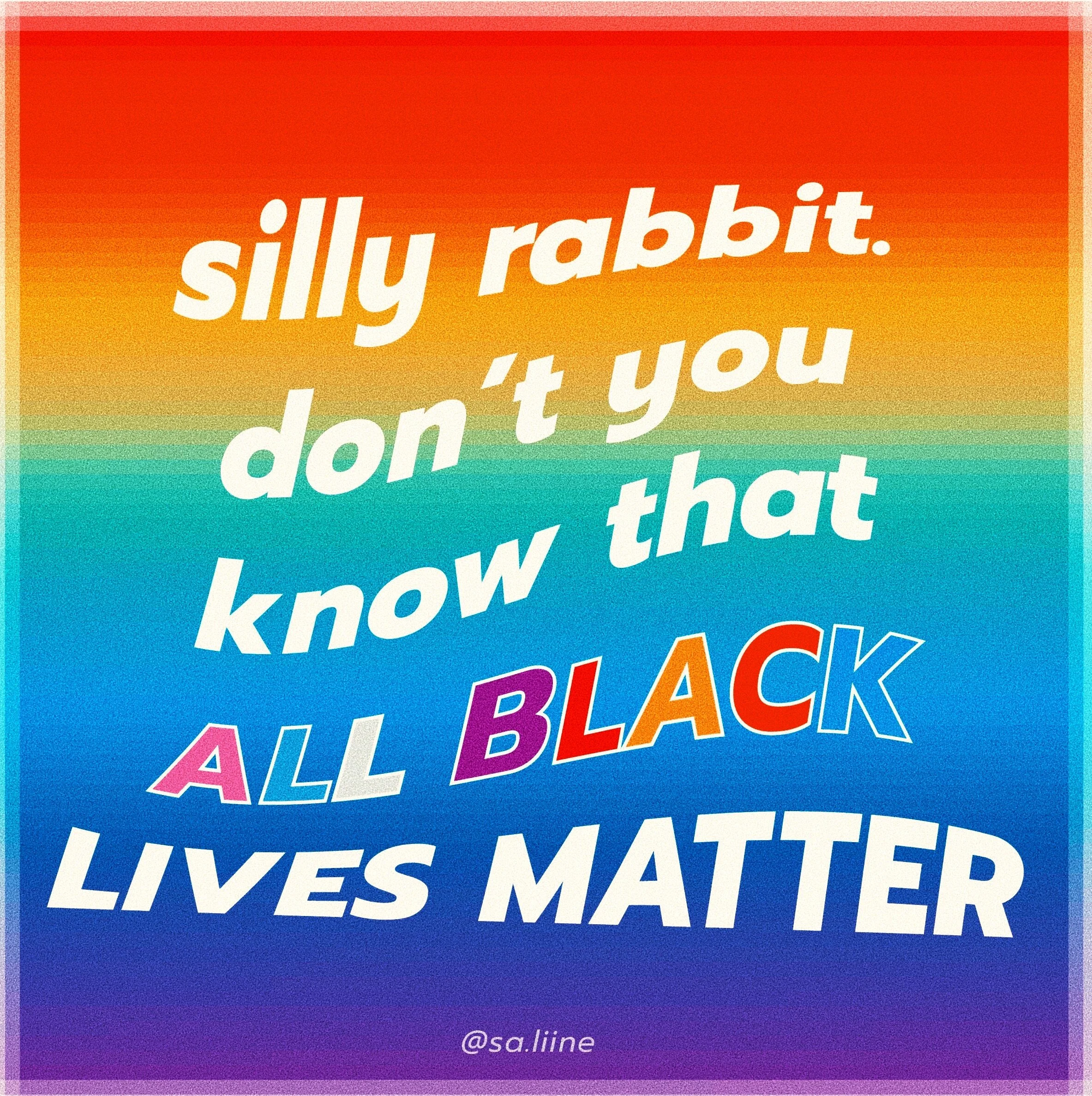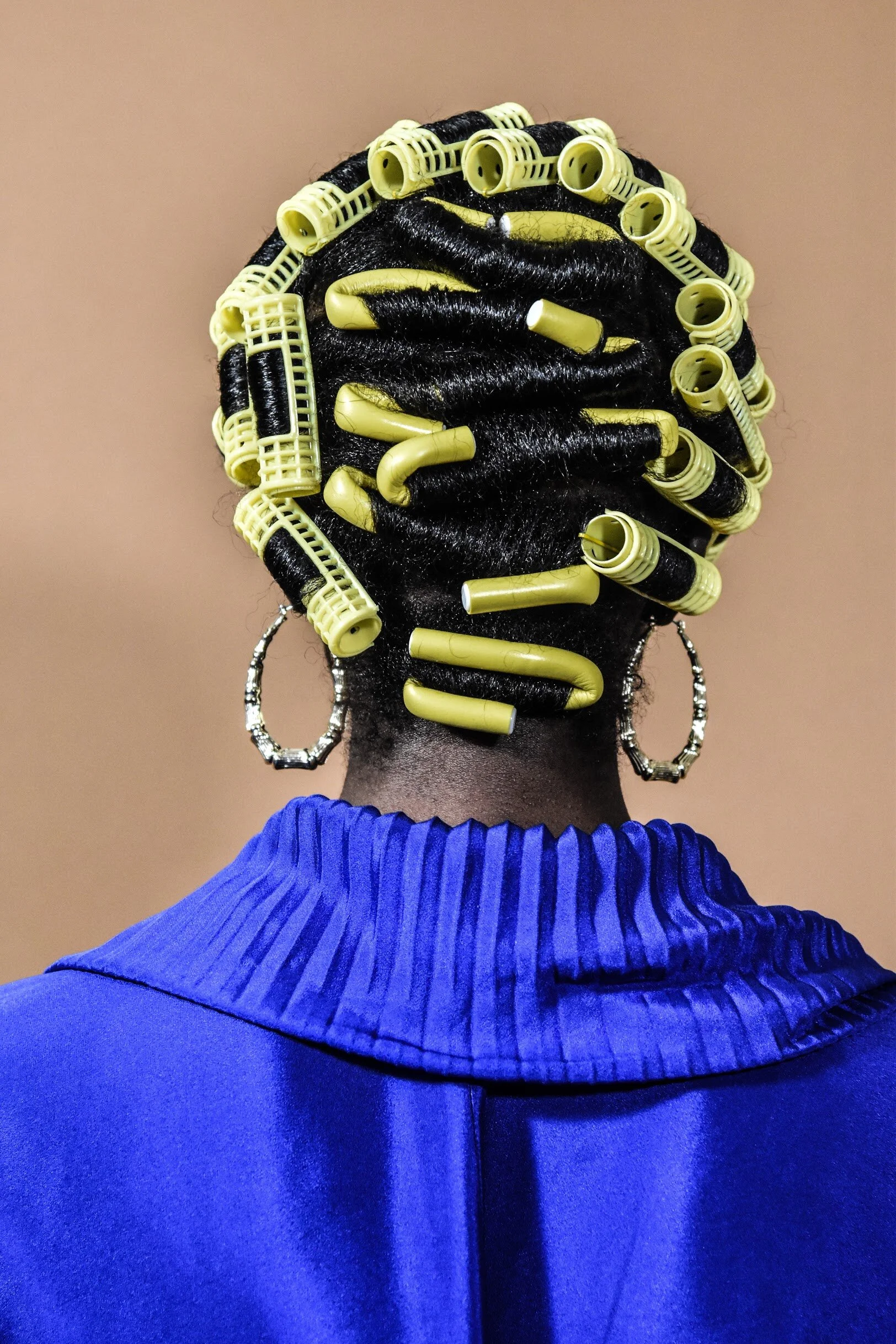BLACK ON THE BLOCKCHAIN
How Black Artists and collectors can leverage blockchain to democratize the digital art world.
Written by: cee sando
Art: GammyKillz
I am sure I do not have to convince you of the erasure of Black people in the Western art world.
Whether your interest in the art world stems from years spent studying the tradition or casually perusing museums and galleries in your free time, its history of white privilege and patronage is undeniable. From the artists who are celebrated along with the leadership at galleries and museums, to those privileged enough to access art and amass incredible collections — the landscape is predominantly and painfully white.
We have seen attempts at shifting this narrative, with galleries showing more work by Black artists and including more content discussing racial issues. Still, this move seems to be more tokenizing than anything. In 2019 a group of mathematicians, statisticians, and art historians at Williams College along with Kevin M. Murphy, senior curator of American and European Art at Williams College Museum of Art, and Steven Nelson, professor of African and African American Art at the UCLA conducted a study on the collections of 18 US museums, including the demographics of artists across over 40,000 works. The study found that 85.4% of artists represented in these collections are white and 87.4% are men, which is significantly incongruent with the demographics of the nation, which is only 60% white and 49.2% male.
It is not difficult to make the leap that galleries, especially major galleries, have similar demographics with respect to the artists they represent. The overwhelmingly white curators of these spaces base their selections on an arbitrary set of Eurocentric criteria while using code words like “quality” and “good taste” to justify exclusion.
Kearra Amaya Gopee is a multidisciplinary artist concerned with intersectionality and the notion of ‘post-coloniality.’ They describe their work as mostly conceptual, and always for and about Black people. Gopee has never been represented by a gallery, and rarely shows in galleries. They are very wary about working with galleries due to lack of diversity in terms of artists, staff, curators and patronage. “What makes me comfortable working with a gallery is there has to be an ethic of care and geography… essentially I need to see that you tried… If there are no Black people in general, I wonder who is looking because I don’t have a message for you.”
dissecting blockchain
You are likely familiar with cryptocurrencies like Bitcoin, however, you may not be as well versed in blockchain. Blockchain is the underlying technology that makes cryptocurrencies possible in the first place.
Blockchain uses InterPlanetary File System (IPFS) to confirm attribution of the artist who created the piece and ensure ownership. As opposed to a centrally located server, IPFS is built around a decentralized system of user-operators who hold a portion of the overall data. This creates a resilient system of file storage and sharing. Whereas banks facilitate transactions with traditional currencies, Blockchain allows the free transfer of cryptocurrency through a decentralized environment —meaning all associated data is held in an interlinked network of computers, owned and run by the users themselves.
In the art world, blockchain-based platforms allow artists to register the copyright and provenance data for their art on tokens. These tokens are unique immutable assets, ensuring each piece’s legitimacy. Through tracking the non-fungible token’s (NFT) ownership and price history on-chain, the authenticity of the piece is assured. Tokens are then exchanged in peer-to-peer marketplaces with each NFT representing the official collectible version of the artwork as intended by the artist.
Collectors purchasing digital art own the pieces securely through cryptography, while also having the option to sell or trade the piece when art demand is high. When pieces are sold or traded, artists retain authorship attribution on each piece, ensuring credit ultimately goes back to the original artist.
Digital art sales already have an impressive stake in the art market, with considerable expected growth. According to a Statista study, art sales in the online market amounted to $5.9 billion in 2019 and are forecasted to increase to a total of $9.32 billion by 2024.
With lockdowns in every state due to COVID-19, it stands to reason that this growth would be even more significant than previously estimated. Art galleries and museums have been forced to put their regular operations on hold. This sudden shift has led to the rise of digital art. Out of necessity, institutions which previously relied on physical patronage are now making the shift to a focus on digital offerings. Internationally renowned fair Art Basel opted to launch a digital initiative in conjunction with the Hong Kong iteration, with online viewing rooms available over the course of a week this past March. About the initiative, Global Director Marc Spiegler says: “As the art market continues to evolve, Art Basel has continually investigated how new technologies can give us new opportunities to support our galleries.”
During a time when being able to experience and interact with art from the comfort and safety of your own home has never been more important, we are seeing significant increases in the viewing, trading, and selling of art in cyberspace. Those who not so long ago maintained that they would never be interested in experiencing or purchasing art beyond brick and mortar galleries are deep diving into the world of digital art.
While more traditional galleries struggle to stay afloat or convert to virtual offerings, digital-based galleries are booming. Even the gaming space is getting in on the digital art boom, with online games like Occupy White Walls allowing users to create their own virtual art museum and curate digital art exhibitions.
what does this mean for Black artists and collectors?
The advent of these new technologies opens the digital art space in new and exciting ways. Gone are the days of a select group of homogeneous individuals acting as gatekeepers to the entire industry.
Being able to sustain oneself through their craft is a key concern for artists, and this is especially true for Black artists. Without major gallery representation, patrons, and an extensive list of collectors, it is very difficult for Black artists to make a living from their art alone. “Opportunities have been slim because who gives the opportunities?” says Gopee, “Who has the resources to give them? Even though opportunities have been slim it is important to me to maintain integrity with my work… I have multiple day jobs so I can continue making things how I want to make them, at the pace I want to make them and for the people I want to make them for.”
By GammyKillz
Via blockchain, Black artists have complete control over the sale and distribution of their own work. In effect, artists become their own agents and gallery owners by tokenizing their art and selling it on their own marketplace. With every screen having the potential to become a virtual art gallery, artists are able to curate their own spaces in the cyberworld.
Black artists, especially those creating work that deals with political and race-oriented themes, are rarely featured in museums and galleries, unless connected to specific, rare, race-related exhibitions — a phenomenon most often seen during Black History Month.
After experiencing rejections from galleries as well as numerous attempts to pigeonhole her work, Southern California-based multimedia painter Andrea Evolves opts to sell her work independently, rather than rely on gallery representation. “It always felt like I was being pushed into a certain category,” she says, “No one was looking at what I was making as fine art, it was considered pop-art, or their favorite term to use for Black people: ‘urban’... Black art is so underrepresented. What gets me is when I go to museums I always see pictures and sculptures of Black people, they are just rarely done by Black artists. And when they are done by Black artists they are always put into categories like ‘tribal’ or ‘traditional’ or it has to be Africa-specific. As though they cannot be over in the room with all of the other pieces. That’s something I’ve always been curious about. Why does all of the Black stuff have to go in one area? Why isn’t it integrated everywhere else?”
The open marketplace format also means the removal of middlemen (centralized patrons, galleries and auction houses) taking a bulk of the profits from the sales of art pieces. The replacement of these middlemen by more reliable and efficient machines means more money going directly to the artists producing the works as well as less money added to the price of artworks to cover any costs associated with a third party brokering the deal.
The transparency of transactions on blockchain encourages artists to be active participants in the economic value they have created, bridging the gap between art and the business of art. Through the use of tokens, digital pieces retain their uniqueness and scarcity on the market. One of the issues with producing and selling digital art is the ease of duplication. As soon as a piece is replicated for free, the value drops and the market prospects disappear. Blockchain helps solve this for digital artists by allowing artists to limit the number of copies.
By registering their work on the blockchain, artists are able to establish proof of ownership. Each time a NFT is traded, the artist who originally created the token is credited. This is similar to the way that artists earn royalties on songs in the music industry. NFTs encoded in a smart contract of the blockchain can even be layered, allowing for the creation of multi-element collaborative works in which each element can be tokenized allowing every creator to receive royalties when that work is sold or licensed.
Once exclusively the realm of wealthy white investors with large amounts of discretionary income and a considerable amount of knowledge about visual art trends and art history, the advent of blockchain is democratizing the world of art collection in never before seen ways. Not only do pieces sold on digital markets tend to be priced more reasonably, the concept of fractional ownership is revolutionizing the way collectors purchase and profit. With artists having the freedom to create as many fractions of each piece as they choose, fractional ownership allows buyers to own part of a work along with numerous others. This presents a less daunting way of collecting art, and increases opportunities to see meaningful return on investments.
The platform also allows Black collectors to gain access to countless works without the interference of some subjective set of guidelines about what constitutes “good art.” If you know how to use a search engine, you can gain access to innumerable contemporary digital art pieces. Using search terms like #BlackLivesMatter, #BLM, #GeorgeFloyd, and #politicalNFTs on the SuperRare marketplace brings up an impressive collection of digital work from a diverse selection of artists.
Touted as the most secure way to transfer digital data, blockchain’s key feature is its fragmented nature. Blockchain’s strength lies in its existence as a public, decentralized list of records linked and secured using cryptography. This dictates that no centralized version of the information exists for a hacker to access or corrupt, as strings of data are hosted by millions of computers simultaneously. It allows even the most novice collector to feel secure, knowing that the pieces they collect are authentic.
It is inspiring to see the way artists are currently leveraging the platform, especially in the movement space. On June 6, 2020 the Dada Art Collective launched a digital art project entitled “No Justice, No Peace” with 10 artists collaborating to create the piece in support of the Black Lives Matter movement. The piece is made of stark black and white images of 30 American police officers who have killed unarmed Black people, along with text stating their alleged crimes and time served under each image.
The collective used non-fungible token (NFT) marketplaces OpenSea and Mintbase plus file-storage blockchain Arweave to publish the work. Using Arweave’s blockchain, the artists created a wallet associated with each person killed, holding tokens that have data for the corresponding officers’ information. The project’s website reads: “A wallet has been created in the name of each victim. Each wallet holds a token with the image of their killers. The private keys of the wallets that control these tokens have been destroyed. No one controls these tokens. These tokens can’t be censored, modified, or taken down.”
The piece acts as a way of documenting these crimes that can never be erased; a unique addition to the collection of public lists activists are currently curating as a way of cataloging these incidents.
moving forward
It is thrilling to witness the ways in which technology and art intersect. The considerable growth digital art has experienced in the past few years is predicted to grow significantly over time. With the way new technologies are making art collection easier and safer, this is the perfect time to explore becoming a collector, even if you have never considered purchasing original art.
At this critical juncture, when we are poised for dramatic shifts and are addressing systemic racism in every industry, the art world is not exempt. Blockchain offers:
the ability for Black artists to track and verify their art work through blockchain art
provenance, making forgeries and artist misattribution a relic of the past and bringing transparency and transactional security to the art world;
the elimination of middlemen in the distribution chain, thereby maximizing sale proceeds to the artist; and
the possibility of fractional ownership of art works, thereby lowering barriers to entry into the world of art collection for the less well-heeled.
These technological developments gesture to the possibility of a more inclusive and equitable art world and I, for one, am here for it.
By GammyKillz







